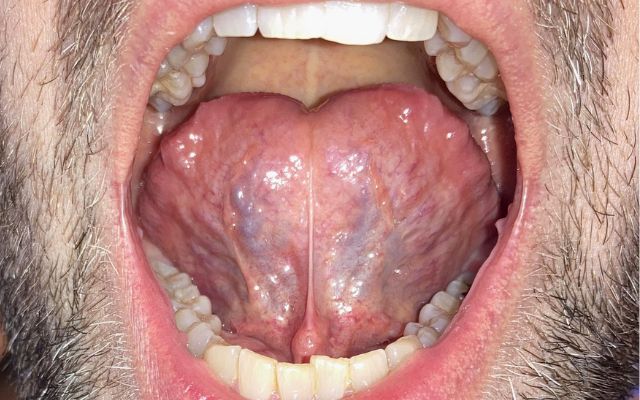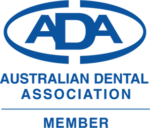Frenectomy: It is an oral surgical operation that treats a lip-tie or tongue-tie and may be performed to enhance the range of motion of your tongue or to close a space between two teeth. This post will show more knowledge about the purpose, procedure as well as other useful information that you should know.
Let’s get started!
What Is Frenectomy?
A frenectomy, also known as a frenectomy, is a surgical treatment used to repair lip or tongue ties. During the surgery, your surgeon will cut or modify a frenum (sometimes spelled frenulum) , a band of connective tissue that connects two locations. In the mouth, frenal can connect the lips to the gums or the tongue to the floor of the mouth.
There are several Ferna in your mouth. Typically, they do not cause any problems. However, if a frenum is excessively short or too tight, it can negatively affect dental health and speech. It can create problems with nursing (Chest feeding) and swallowing in infants.
Types of Frenectomy


Lingual Frenectomy
Your tongue is connected to your mouth via the lingual frenum. If you touch your tongue to the roof of your mouth, you may be able to feel the lingual frenum extending beneath your tongue.
Individuals differ in the length of their lingual frenum. Occasionally, individuals are born with an extremely short lingual frenum. This reduced frenum limits the mobility of the tongue.
This ailment is referred to as “tongue knot” or “ankyloglossia.” Approximately 5% of infants have a tongue tie, according to a reliable source. Males are more susceptible than females.
Tongue tie can hinder nursing during the neonatal years and speech development as the child gets older. The tongue’s range of motion can be increased through a brief operation termed lingual frenectomy.
Maxillary frenectomy
Your upper lip is connected to the gum tissue that is located directly above your front teeth by a frenum called the labial frenum.
It is possible for this frenum to produce difficulties in the development of speech if it is shorter than typical. Lip adhesion is a kind of this illness that affects the lips.
It may be difficult to thoroughly clean the gums and front teeth if you have a lip adhesion, which can be an issue both for dental development and for maintaining good oral hygiene. This significantly increases the likelihood of developing gum disease in addition to other oral issues.
A procedure called a maxillary frenectomy can increase the mobility of the top lip.
Who Needs To Get Their Frenum Removed?
Frenectomies are typically performed on infants who are having difficulty with either feeding or speech, as these are the most common reasons for the procedure. However, frenectomies are sometimes necessary for people of adult age as well.
For instance, if a frenum is too tight, it may pull the gums away from the teeth. This can cause periodontal disease. A frenectomy releases the band of connective tissue, which lowers the patient’s chance of developing gaps in their teeth, receding gums, and other oral health issues.
Purposes of Frenectomy Treatment


There are a lot of different reasons why a frenectomy can be necessary for you or your child. This surgery could be recommended by your healthcare provider in order to address a frenum that is causing:
- A lip-tie, which restricts the movement of the lips.
- A tongue knot is a condition that restricts the range of motion in your tongue.
- Diastema, often known as a space between your teeth, is something that some individuals find aesthetically unappealing.
- Gum recession, which can lead to gingivitis, cavities, and movement in the affected teeth.
- Brushing or other forms of dental care may cause pain, swelling, or soreness.
Procedures of Frenectomy
Before This Procedure
Before conducting a frenectomy, the dentist will review the patient’s medical history. In addition, they will discuss the need for sedation as well as the available sedation techniques, which may include nitrous oxide (laughing gas), oral sedation, and intravenous sedation.
Sedation is not generally required for a frenectomy. Your doctor will help you determine if the following procedures are appropriate for you or your child: tongue-tie surgery, lingual frenulum, front teeth, tongue tie, upper lip, general anesthesia, oral surgeon, soft tissue, labial frenum, surgical procedure, oral frenectomies, lip tie, frenectomy procedure.
It depends on the situation. Infants can endure frenectomies with minimum difficulty and discomfort a few weeks after birth. Regardless of the conditions, your dentist will be able to assist you in determining the ideal time for a frenectomy.
During The Procedure
The frenulum is removed with baby scissors. Typically, this takes no more than a few minutes. In older children and adults, your doctor may numb the frenum’s surrounding tissue using a local anesthetic.
As soon as you are at ease, your frenum will be removed or altered using a scalpel or surgical scissors. In certain cases, stitches may be necessary to close the wound. Typically, a treatment lasts no longer than 30 minutes.
After This Procedure
Your dentist will provide you with specific post-operative instructions following your frenectomy. Infants often require no further care and can resume feeding immediately.
You may require pain medications and antibacterial mouthwash to alleviate any discomfort. Your doctor may want to see you in a week or two to monitor your recovery.
Benefits of Frenectomy Treatment


The surgical removal of the frenum has a number of advantages. This method, for instance, has the potential to:
- Help infants who are having difficulty nursing.
- Tongue-tie can cause issues with speech that need to be improved.
- You can lessen the likelihood of developing gum disease, tooth decay, and other oral health issues by taking preventative measures.
- Eliminating gaps in your grin is a great way to improve its attractiveness.
How Long Does Recovery From A Frenectomy Take?
Recovery is rapid in infants. Additionally, they are typically able to feed without problems right away. Recovery from a frenectomy in children and adults typically takes between three and five days. During the healing process, your healthcare professional will offer you with recommendations for controlling any discomfort.
You may immediately consume drinks after your operation. You should not eat until the anesthesia’s numbing effects have worn off. Stick to soft foods during the first few days, and as you feel more comfortable, attempt more solid foods.
It is highly suggested that you see a dentist at least once every six months for a dental checkup and cleaning in order to keep your teeth healthy and keep their white appearance. This can be done at your regular appointment with the dentist.
FAQs
When Is Frenectomy The Appropriate Procedure?
It really depends on the circumstances. Just a few weeks after delivery, frenectomies can be performed on infants with minimal discomfort and in a relatively short amount of time. Your healthcare professional will be able to assist you in determining the most appropriate timing for your frenectomy, regardless of the circumstances.
How Much Does The Frenectomy Cost?
Oral frenectomies are typically covered by medical insurance. If you or your child get a referral from a licensed practitioner, the procedure will most likely only cost you the amount of the copay that you agreed upon before the appointment.
The cost of this surgery can be significantly higher if the patient does not have insurance.
What Can You Not Do After A Frenectomy?
For the first forty-eight hours following the treatment, you should refrain from forceful rinsing, sucking on the wound, using a straw, spitting, and engaging in physical activity. This will assist to reduce the likelihood of experiencing any discomfort.
Does my Child Need a Frenectomy?
This relies on the dental health of the youngster. Contact our Bassendean Pediatric Dentistry for scheduling. The dentist will evaluate and recommend the optimal treatment plan.





